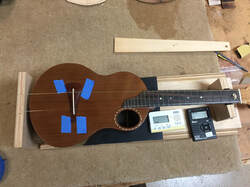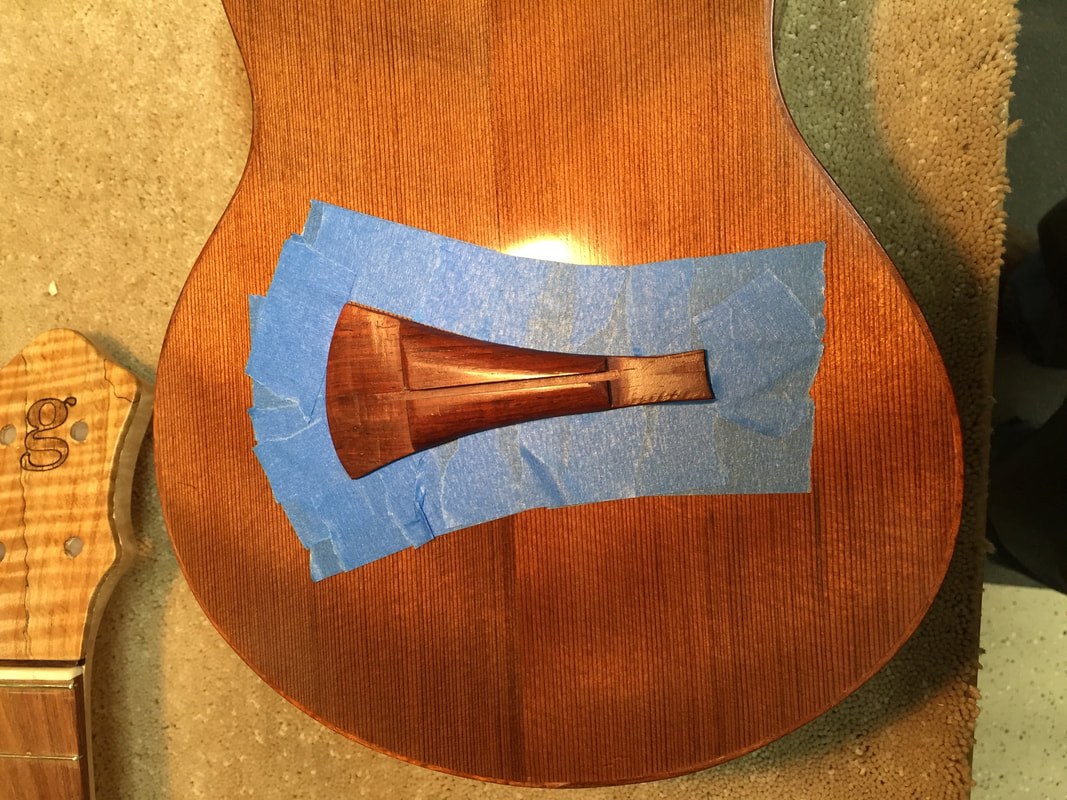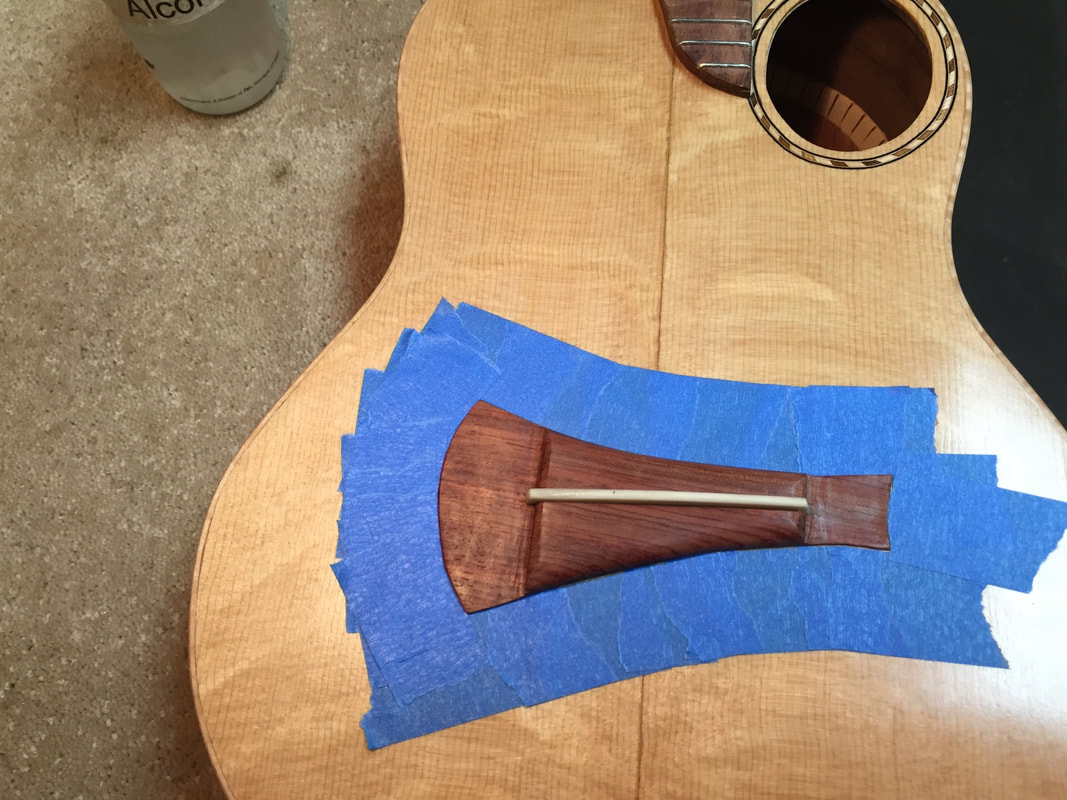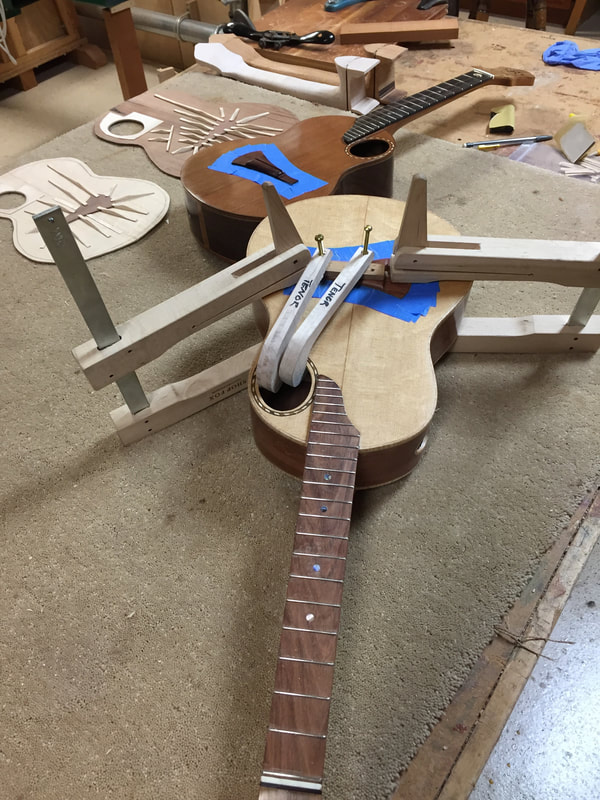'the long French Polish process is completed. it is time to hear what these beauties sound like. The first step is determining exactly where the bridge and saddle must be placed.

'this contraption stretches two strings across the instrument between the zero fret and the free moving bridge. It allows you to move the bridge around until perfect intonation is achieved. When the bridge is placed just right ou can pluck the strings open, and get exactly the same note when fretting the 12th fret. When you find that spot you mark it with tape. here is the 'sweet spot" for Beth's uke.
Then you carefully tape to the edges of the bridge to outline exactly where you will scrape off the finish to bare wood so you can glue on the bridge. The scraping is done with a razor blade.
This process also provides the first chance to hear the sound of the instrument. I expected the rich tone of the Redwood-no surprise, but I was delighted to hear the rich tone of Torsten's bear claw Spruce. I think both of them are going to be good ones.
In the morning the clamps come off, the tuners will be installed and we will hear how our first Bubinga and Spruce tenor sounds. If it sounds as good as the baritones I have made with this combination I will be thrilled.



